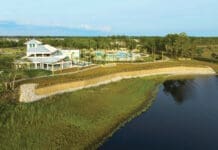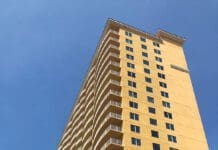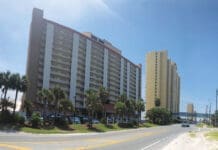By Julie McConnell, UF/IFAS Extension Bay County
Florida Arbor Day is Friday, January 21, 2022, which has me thinking about trees. Restoring the urban canopy that was severely impacted by Hurricane Michael has been a goal of this community for the last three years, but in addition to replacing trees it is important to properly maintain our trees. I write articles and have discussions with people about tree care frequently, but driving around Bay County I continue to see bad installation and maintenance practices everywhere I look. Maybe no one wants to hear what I have to say, but what if your trees could talk to you? Below is what they would tell you if they could.
My roots need oxygen, stop burying me under soil, thick mulch, and sod!
It is a well-known fact that roots absorb water and nutrients, but did you know they also need oxygen to function? Trees planted too deep, in compacted or saturated soils, or roots buried beneath thick mulch or sod have limited access to oxygen. This oxygen deprivation will inhibit growth and eventually kill roots which negatively impacts tree health leading to stunted growth and eventual death of the tree. Not sure if you planted me too deep? Look for my root flare (base of the trunk that curves outward found on most trees) – if you can’t see it, I am probably slowly suffocating.
Give me room to grow – above and below ground!
Be hopeful when you plant a tree that it will survive for generations and reach its full potential. If I have a mature height of 50 feet with a 25-foot spread, please don’t plant me three feet from your house under 12-foot utility lines. You will eventually destroy my canopy to avoid these structures. Don’t forget to consider underground growth – my roots are critical for survival and need room to extend 2-3 times the width of my canopy. Give me room to grow without restrictions such as sidewalks, driveways, roads, septic systems, or other underground obstacles.
Step away from the chainsaw!
Trees do not need to be “deadheaded” to produce flowers. Crape myrtles will bloom regardless of pruning and heavy pruning comes at great cost. Removing woody tissue eliminates vast amounts of stored energy reserves – energy needed to produce leaves, flowers, and stems (like the ones you just removed). Long term heavy pruning gives me knobby scar tissue, weak branching structure, reduced growth, and attracts those pesky aphids that are drawn to succulent new tissue which I am pressured to produce each Spring. Although other trees are not routinely cut to produce flowers like crape myrtles, they are also often over-pruned or have cuts made improperly which can lead to internal rot. If you or the tree trimmer you are considering hiring do not fully understand tree physiology, find someone who does. Locate a certified arborist at https://www.treesaregood.org/findanarborist/arboristsearch
To learn more research-based facts about trees visit https://hort.ifas.ufl.edu/woody/fact-sheets.shtml
Julie McConnell can be reached at juliebmcconnell@ufl.edu. An Equal Opportunity Institution. UF/IFAS Extension, University of Florida, Institute of Food and Agricultural Sciences, Nick T. Place, dean for UF/IFAS Extension. Single copies of UF/IFAS Extension publications (excluding 4-H and youth publications) are available free to Florida residents from county UF/IFAS Extension offices.





















































